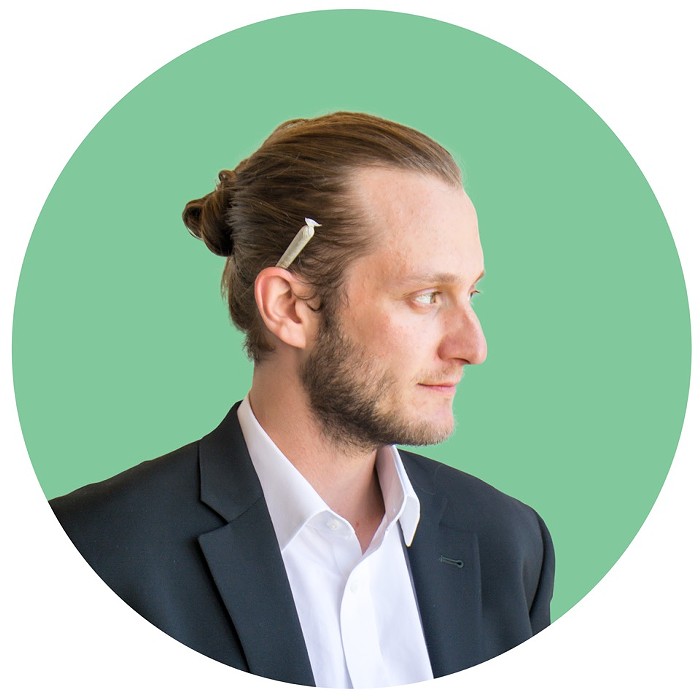
Cycling has a weirdly positive effect on me. It’s stronger than Zoloft, and this inherent joy in riding a bicycle is the only reason I wasn’t entirely fucking depressed by the end of last Friday’s Bike Everywhere Day.
This wouldn’t be the case if I existed in a different reality where Jenny Durkan wasn’t the mayor of Seattle. I live in Lake City, so my cycling commute to The Stranger's offices on Capitol Hill involves riding down 35th Avenue NE. Before Durkan took office, the Seattle Department of Transportation (SDOT) had planned on putting 5-foot-wide bike lanes on this street with a protected bike lane on the southward direction. But Durkan and SDOT director Sam Zimbabwe killed that plan in March and replaced it with zero bike lanes, giving that space to drivers with a center turn lane instead, and shoving cyclists back into traffic.
So my Friday commute into the office during the official Bike Everywhere Day (a sort of holiday for riding your bike to work) involved drivers passing within inches of me or using the center turn lane to pass me but still flying down the road with little regard for my safety. Instead of enjoying a commute down a protected bike lane—which would be entirely separated from automobiles and would seamlessly connect to the Burke-Gilman Trail, one of the city’s longest and most useful bike paths—I was thrown into traffic and forced to jockey with drivers that wantonly risked my safety, like this video taken on Friday and posted to Twitter clearly shows.
More illegal passes this morning on #Safe35th, including one from a student driver. Caught up to everyone at the light again too. Happy #BikeEverywhereDay #Seabikes pic.twitter.com/rwNby1kQIB
— Mitch (@mitchellplease) May 17, 2019
That video captures the dangerous situation Zimbabwe and Durkan have created along 35th, though both the cyclist in that video and I actually got lucky. According to the Seattle Bike Blog, a cyclist was hit by a driver and taken to the hospital on that same very stretch on that very same day. But I don’t blame the ignorant drivers. I blame Durkan and Zimbabwe.
The dangerous, automobile-centric redesign of 35th Avenue is part of a coordinated effort by this administration to prioritize cars over non-automobile forms of traffic, with a special emphasis on reducing the number of protected bike lanes built in the city. Protected bike lanes, like the one that runs along 2nd Avenue downtown, put space and often physical barriers between cyclists and traffic. There’s ample evidence that they're safer for cyclists and encourage more people to ride a bike; ridership jumped more than 400 percent when the city installed a protected bike lane on 2nd Avenue. But our current administration doesn’t seem too interested in building more protected bike lanes.
Three days after Durkan and Zimbabwe announced that they were killing plans for the 35th Avenue NE bike lanes, they unveiled drastic cuts to the city’s Bike Master Plan, removing at least 26 miles of bike lanes and putting another 27 miles at risk of being cut from the plan. Those cuts include scrapping planned protected bike lanes along Beacon Avenue S and Rainier Avenue S, according to Seattle Magazine.
These protected bike lane cuts are particularly frustrating. Roads like Rainier Avenue S, Beacon Avenue S, and even 35th Avenue NE, were intentionally selected because they are essential routes for cycling in the city. Beacon and Rainier avenues are required riding for getting around South Seattle, and 35th Avenue is the most reasonable way for cyclists in a massive section of Northeast Seattle to get to the Burke-Gilman and the rest of the city. Durkan would never block a project that was this important for automobile access in the city, yet she feels comfortable scuttling bike lanes on routes that are essentially like I-5s for cyclists.
What is the one silver lining in all of Durkan and Zimbabwe’s planet-burning, auto-centric madness? It might not buy a seat in Durkan’s powerful ‘Kitchen Cabinet,’ but cycling is still a powerful positive force in individual lives. People are still deciding to risk their own personal safety and ride bicycles on Seattle’s streets. Between 2017 and 2018, Seattle saw a 12.1 percent increase in bike ridership, according to the city’s own data collected at five different locations.
And I’m one of those people that are riding in spite of our current administration. Friday was the first time I rode a bike to The Stranger since starting this job last July. And despite the terrible, dangerous design of 35th Avenue, I rode my bike to work on Monday and Tuesday as well. As long as I don’t get hurt on my ride home, I’ll try it again tomorrow, hoping that someday Seattle becomes a safe place to ride a bike.













